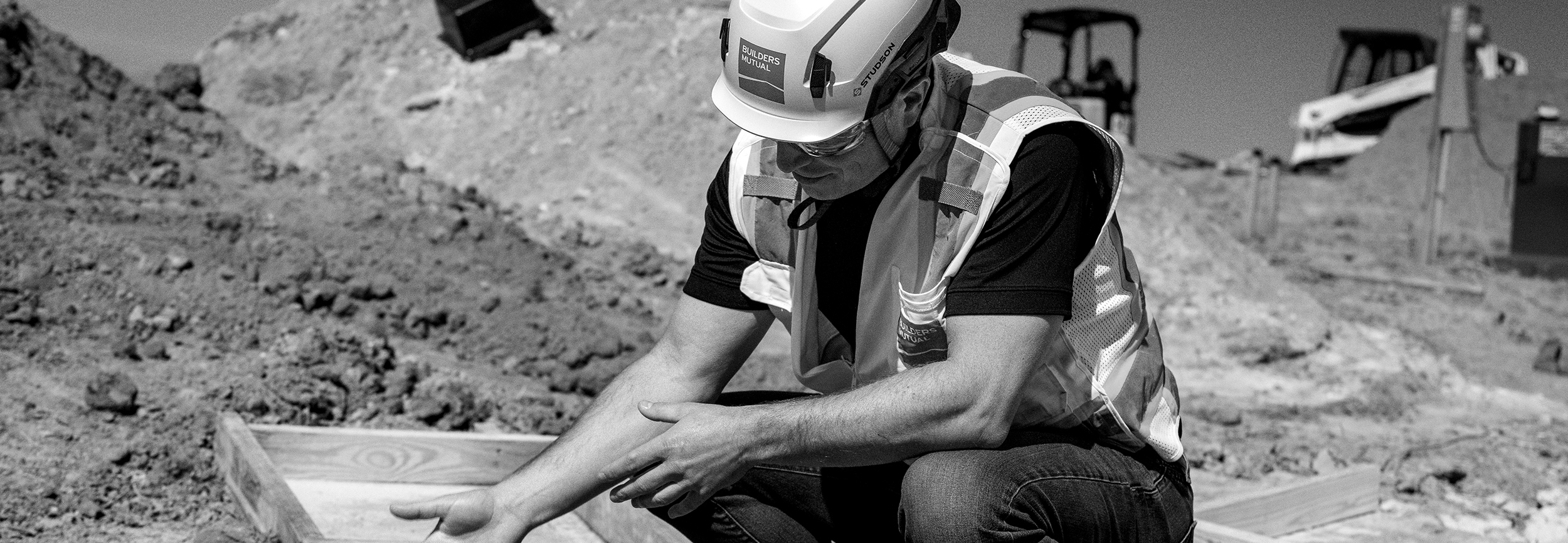According to Zendrive, an estimated 60 percent of drivers use their phones while driving. Distracted drivers make the road more dangerous for everyone, and distracted employee drivers are a liability for all types of companies, including construction. This can lead to avoidable injuries and deaths as well as increased insurance costs. Fortunately, there are several ways to monitor employee driving, helping to limit distracted driving and prevent accidents on the road. Risk Management expert Sean Purcell reviews three driver monitoring options.
1. FleetWatch 1-800 How’s My Driving stickers
Fleetwatch, a partner of Builders Mutual, offers 1-800 How’s My Driving stickers as one of its driver monitoring services. These stickers enable other drivers on the road to notify owners and managers when their companies’ drivers exhibit risky behavior.
The stickers are designed to increase driver safety and can help keep drivers accountable, because the drivers know they are being indirectly supervised. This tool is proven to be effective in preventing collisions.
Builders Mutual policyholders who use this service will receive a reduced rate.
2. Telematics
Telematics monitoring services include GPS tracking, enabling users to receive alerts when drivers take certain actions. These services also allow fleet managers to track drivers’ locations at all times. Some services incorporate outward-facing cameras.
Telematics increase driver accountability significantly, because managers can set up alerts for drivers speeding, accelerating, braking excessively, or making sharp turns—all typical signs of distracted driving. Because drivers are aware that their superiors know when they take unnecessary risks, they’ll be less likely to do so.
3. Dual Camera Systems
In addition to telematics, these systems include inward- and outward-facing cameras that monitor drivers and their surroundings at all times, capturing video, audio, and GPS location.
Managers are able to proactively mitigate distracted driving by directly supervising drivers and observing the responses of cars around them. For example, managers can see whether drivers are engaging in dangerous or distracted driving habits like driving while eating, using their phones, or doing paperwork. Managers can also set up alerts for moments when drivers switch lanes too quickly or stop too harshly so that the managers can acknowledge and discourage the risky behavior before it causes an accident.
The recorded footage can be used for training purposes so drivers can learn from their mistakes. In the event of a claim, this footage can be used to show what really happened and, for better or for worse, who is at fault.
4. Addressing the challenges of driver monitoring services
Implementing any driver monitoring option may not be well-received at first. Unfortunately, installing stickers or telematics and camera systems might convey a lack of trust to employees.
It is important to remind your drivers that their safety is the priority and that you want to encourage safe driving on the job—and ultimately discourage distracted driving whenever they get behind the wheel. Explain to your team that by incorporating driver monitoring services you are strengthening the company’s overall safety strategy and culture. These tools are proven to reduce dangerous driving habits and decrease the chances of costly and dangerous accidents. Your employees will soon see that this decision was made out of concern rather than distrust.
Given the increase in distracted driving in recent years, it’s a good idea to consider risk-reduction measures like these. No matter which method you choose, you will see an immediate change in driver behavior.
Resources:
- http://1800howsmydriving.com/1-800-hows-my-driving/
- https://www.businesscar.co.uk/analysis/2017/the-pros-and-cons-of-telematics
- https://www.overdriveonline.com/video-witnesses-dual-camera-systems-making-in-roads-in-fleet-trucks/
- https://www.foleyservices.com/news/pros-cons-driver-facing-cameras/
- http://www.fleetowner.com/technology/big-question-cameras-driver-or-not
Content reviewed 8-2021.




 Find an
Find an